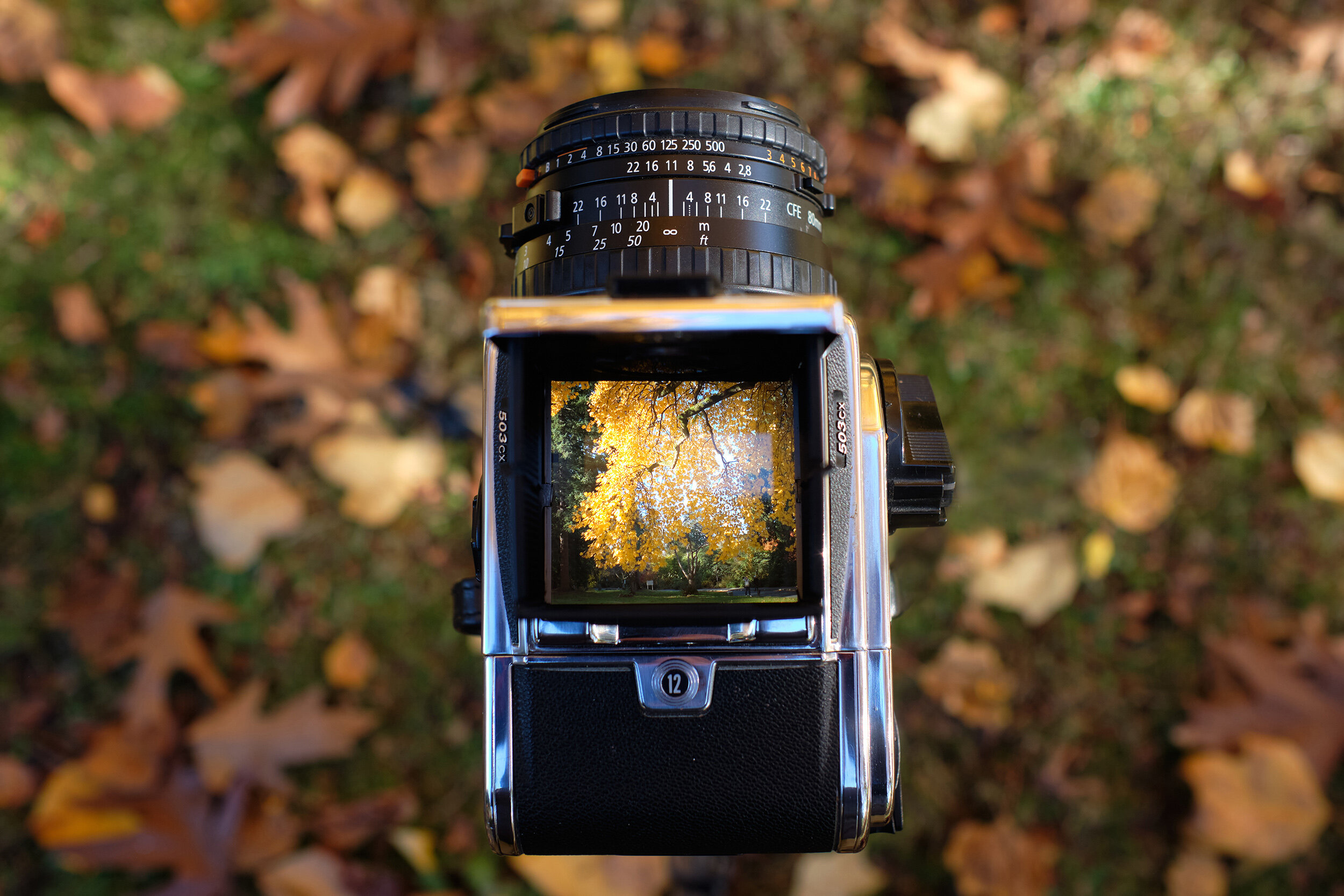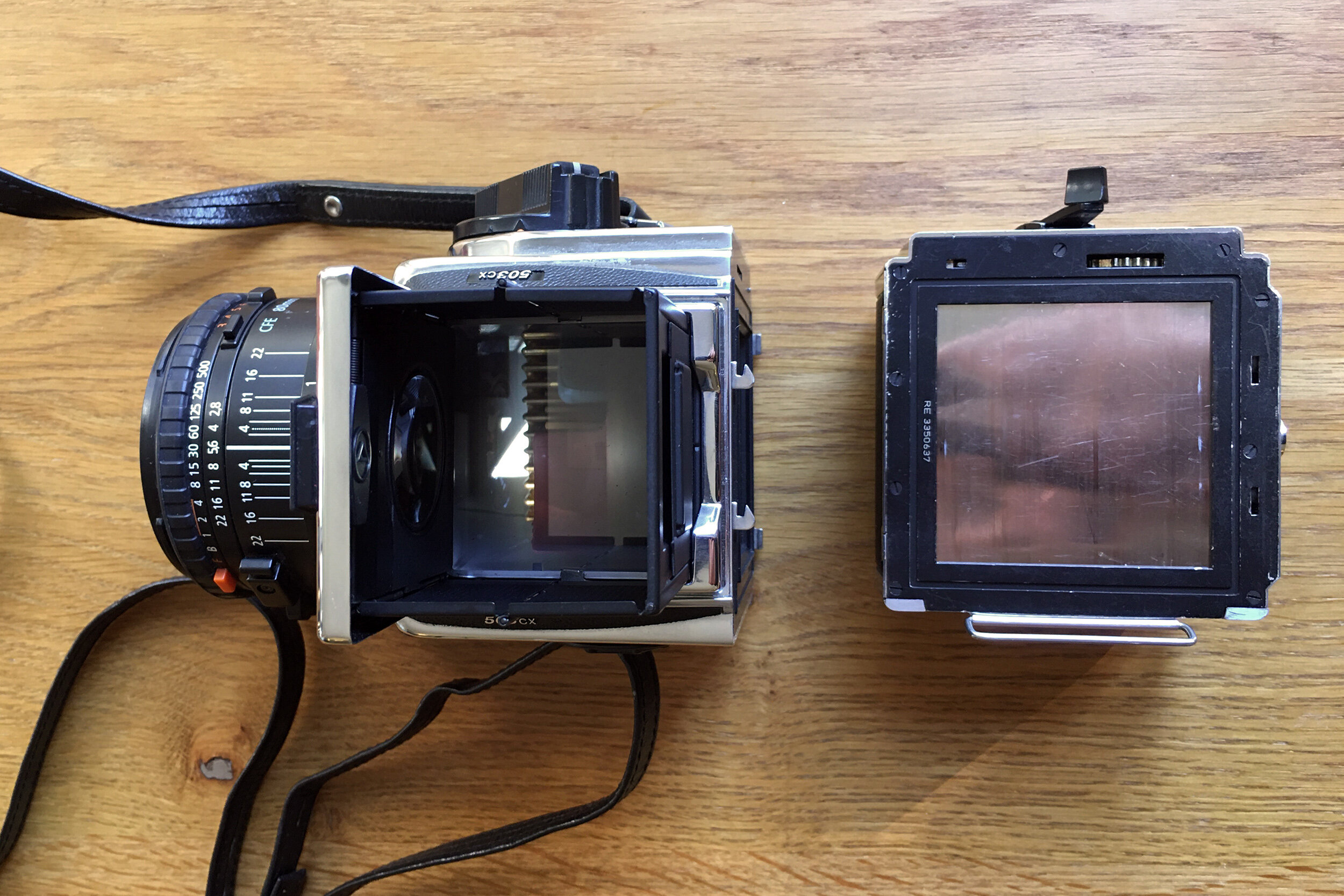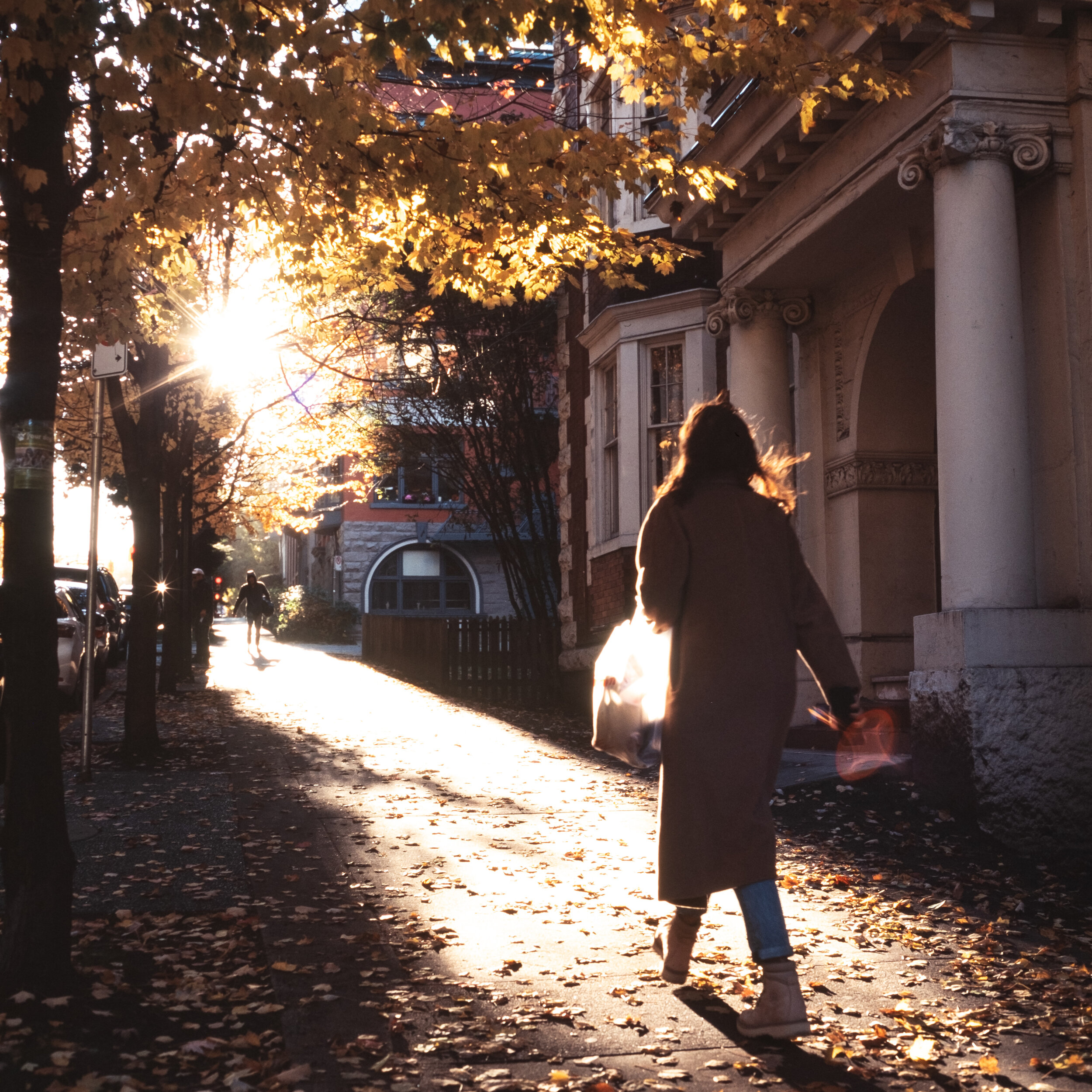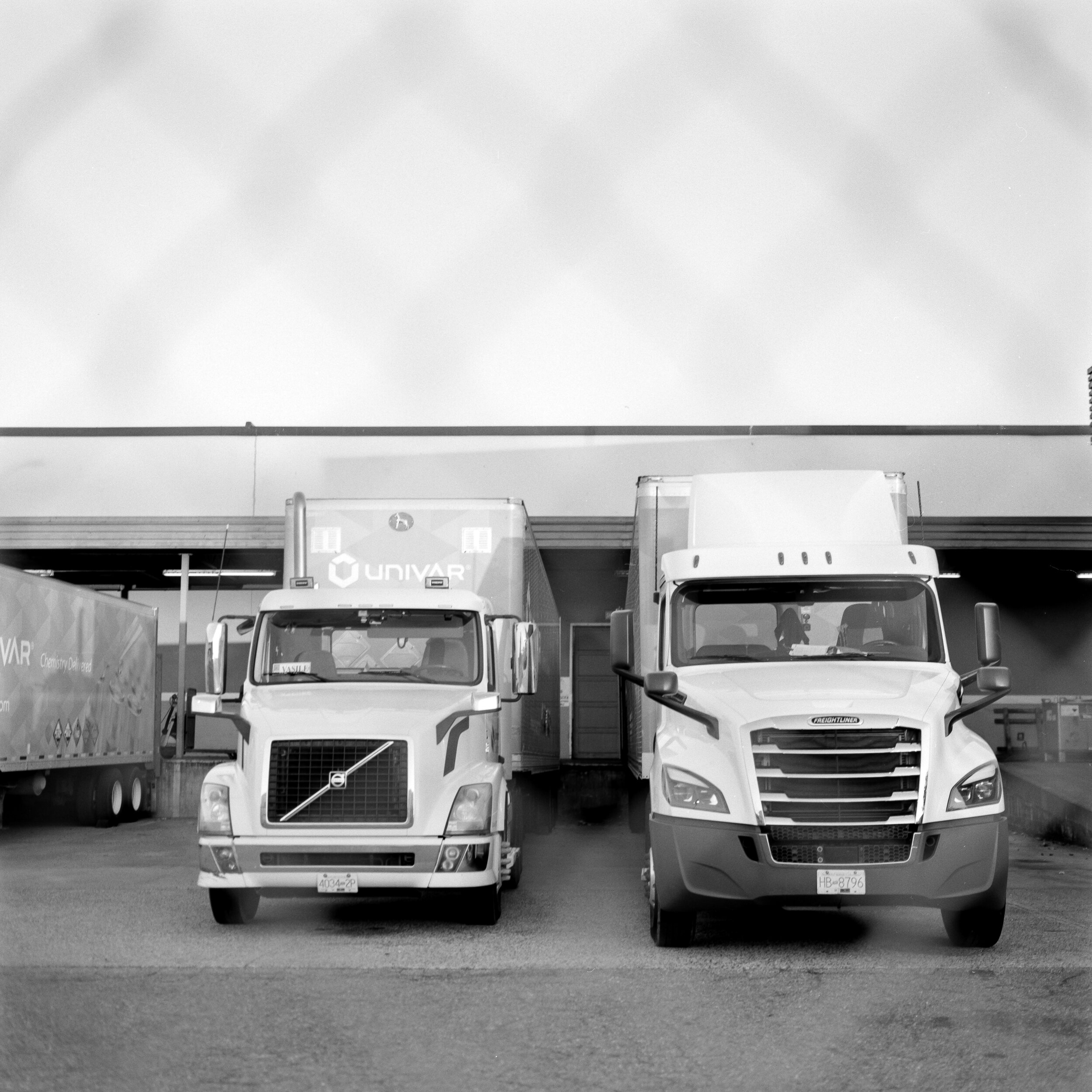Hasselblad 503CX Review

A Hasselblad 503cx shown with the Hasselblad Zeiss 80mm f/2.8 CFE lens
Hasselblad 503CX - Five Rolls Later
Reviewing the Iconic Hasselblad
I was curious to see what the iconic Hasselblad 500 Series is all about and decided to rent a 503CX for a weekend. The look of medium format 120, 6x6, film has an appeal that is hard to ignore once you have laid eyes on it and come to appreciate it.
My Hasselblad experience to this point has been limited. I have known about Victor Hasselblad’s, made-in-Sweden, cameras for as long as I can remember but only once did I shoot a roll at my good friends Mike and Linda’s wedding about 15 years ago.
I recall the photos being lifelike and even my full-frame Canon images could not measure up to the quality and feel of the photos from the Hasselblad.
The Hasselblad 503CX with Carl Zeiss Planar 80mm f/2.8 CFE lens
Hasselblad History
I will not go into detail about the 500 series Hasselblad history but only mention that the first prototypes saw the light of day in 1953 and the first 500C was released in 1957. For a fascinating read check this page from Hasselblad.
The 500 series modular system has proven to have longevity. It is still a highly desired camera among photographers and you even get digital backs to fit your old Hasselblad.
The Hasselblad 503CX with Carl Zeiss Planar 80mm f/2.8 CFE lens
My Hasselblad Experience
I picked five different film stocks to try out over the weekend and wanted to take the camera through some of my usual genres, such as street, nature, travel, and portrait photography. I will have a separate post coming up on the two portrait sessions I did.
I also wanted to compare the experience and final results of shooting the Hasselblad and my Zeiss Ikon Ikoflex, a medium format 120 film twin-lens reflex camera I inherited from my dad.
Getting ready for a weekend with the Hasselblad 503CX with four rolls of 120 film
Getting Ready - What to Bring For a Hasselblad Shoot
The Hasselblad 503CX is a manual camera with no light meter. Shutter speeds and aperture are set on the lens which features a leaf shutter enabling high sync speed shooting with strobes. I packed my Sekonic L-358 light meter and also brought my Fujifilm X-Pro2 for metering distant scenes.
For my first street photography session, I decided to bring a monopod in order to reduce the camera shake. I also packed a mechanical shutter release cable for the same reason.
A three camera outing with the Zeiss Ikon Ikoflex, Hasselblad 503CX, and Fujifilm X-Pro2
Loading Film - Hasselblad
I turned to Youtube and found a few great tutorials on how to load film into the 503CX. It is pretty straightforward. First, move the film spool to the left. Then insert the film, and make sure the black part of the film faces the camera. You can either leave the film back on the camera or remove it when inserting the film.
Make sure to keep the dark slide (metal piece) inserted in the film back. Wind the film to the “start” position and close the film back. Then wind the film to frame 1 and you are good to go. Then remove the dark slide or the shutter won’t trigger.
Street Photography With a Hasselblad 503CX
It was a sunny afternoon and I decided to load a roll of Fujifilm Provia 100 first. I did shoot this first roll using the monopod and mechanical shutter release cable and right away noticed how radically different my approach became. I had to slow down completely for each frame.
Friday afternoon in Vanouver, Hasselblad 503CX, Zeiss 80mm f/2.8 @ f/8, 1/125s, ISO 100
With merely 12 shots per roll, every shot is carefully calculated. Light is metered, shutter speed and aperture are set manually, and manual focus takes a while when you first start out.
The magnifying loupe in the waist-level viewfinder aids in getting accurate focus but it’s finicky and I caught myself going back and forth. Reading glasses off and on.
The Hasselblad 503CX on a monopod with and mechanical shutter release cable.
I was enjoying the process but it also quickly became cumbersome as I was lugging around too much stuff. I was carrying a backpack, navigating the city with the Hasselblad on the monopod. I had the X-Pro2 and the light meter around my neck. The Zeiss Ikon Ikoflex only came out of the bag for a couple of shots.
The Coronavirus situation also meant I was wearing a facemask and I was wearing my toque and thin gloves due to the crisp fall temperatures. In short, I felt hampered by stuff.
Ilford HP5 - Hasselblad - Street Photography
I switched to a black and white roll of Ilford HP5. I also dropped the monopod and mechanical shutter release cable as this freed things up just enough that I enjoyed the experience so much more. While I still used my light meter, handholding and using the shutter button felt better to me.
Downtown Vancouver, Hasselblad 503CX, Ilford HP5
I am sure with practice you can get fantastic street images with a Hasselblad. This was the first run for me and having to manually focus and getting used to the fact that you are viewing a mirrored image in the waist-level viewfinder slowed me down considerably.
Slowing down is not necessarily a detriment to the final images as more time and consideration are put into an image before hitting the shutter release. But it was a drastic change from my usual approach with a digital mirrorless Fujifilm X-Pro2.
I took two photos of a similar scene. The first photo with the Hasselblad and the following with my Zeiss Ikon Ikoflex. The Zeiss Ikon photos are slightly cropped due to a persisting issue where the frames are overlapping.
Hasselblad 503CX and Hasselblad Zeiss Planer 80mm f/2.8 CLE
Zeiss Ikon Ikoflex with Zeiss Zess-Opton Tessar 75mm f/3.5
The images look surprisingly similar even when zooming in on a larger version. I had perhaps expected the Hasselblad to perform even better. Both photos are rendered using a Zeiss lens albeit from vastly different decades.
The Hasselblad Zeiss is from the early 21st century and the Zeiss Ikon Ikoflex is from the late fifties. Let me know in the comments if you see a noticeable difference.
Kodak Portra 160 in The Park
Waking up to sunny skies this time of year is a treat and especially when you have a camera to test. We did a quick loop around Stanley Park and this time packed the tripod for a few selected spots along the seawall. Due to the amount of equipment, we were bringing we took the car.
The approach, again, was completely different from how I would usually cover this area of Vancouver. I most often cycle or walk with my Fujifilm X-Pro2 loosely hanging around my neck and maybe a second lens and Manfrotto mini-tripod in a jacket pocket or small backpack.
The Zeiss Ikon Ikoflex came along again for a few comparison shots. I was running Ilford HP5 in the Zeiss Ikon so not a fair comparison but thought I would share anyway. The first two shots are Hasselblad, then Zeiss Ikon Ikoflex.
Ilford Delta 100 and Hasselblad 503CX
The last roll was black and white Ilford Delta 100 which was shot in part for portraits I did with my son along the Fraser River.
The portraits and results from the fifth roll, a Kodak Tri-X 400, are coming up in a future post. The Ilford Delta 100 has a fine grain, is very sharp, and the photos below were all handheld as I had plenty of light.
Hasselblad 503CX - Conclusion
The Hasselblad 503CX I shot over the weekend is a later model produced from 1988 to 2004 meaning it is a more refined and reliable camera than my Zeiss Ikon Ikoflex from the late fifties. It also means it is one of the more expensive 500 series cameras if you are looking to buy a used Hasselblad.
After a quick search on eBay, I found the following average prices for a Hasselblad with the A12 film back and 80mm f/2.8 lens: 500C - $1,700.00, 500C/M - $2,000.00, and 503CX - $2,200.00. Much will depend on the condition of the camera.
The comparison of the Hasselblad to my Zeiss Ikon Ikoflex is not apples to apples, as they are indeed completely different cameras, merely sharing the same 120 film format. If you are looking for a customizable system camera and would like to shoot with a range of lenses, you should look further into Hasselblad.
The Zeiss Ikon Ikoflex is a lighter option Twin-lens reflex camera with a fixed 75mm f/3.5 lens. My copy still has issues with frames overlapping and I intend to have it checked out again. I am quite pleased with the image quality from the Zeiss Ikon Ikoflex and will continue to run more film through it to see what I can come up with.
The classic Hasselblad 503CX prism shot, A12 film back, and Zeiss Planar 80mm f/2.8 CFE
Despite my quibbles mentioned above I really enjoyed the Hasselblad experience and encourage you to try it out if you get a chance. The sound of the camera and the way film is advanced manually is a delight and I, for one, could do with a bit of slowing down.
At this point, I am not looking to add a Hasselblad to my gear bag although I wouldn’t mind owning one. I am quite content to explore my option with the Zeiss Ikon Ikoflex but in the same breath realize if I want to get the shot, something more reliable like a Hasselblad is a great choice.
Luckily I live in a city where I can rent one and I would not hesitate to do this again for a special shoot or occasion.
The negatives in this post were copied using a Fujifilm X-Pro2, an AF Micro Nikkor 60mm f/2.8D lens, and Skier Sunray Copybox 3. RAW files were imported to Lightroom and I used the Negative Lab Pro plugin to convert the files.
My reviews at a glance: Camera Reviews - Archives




















